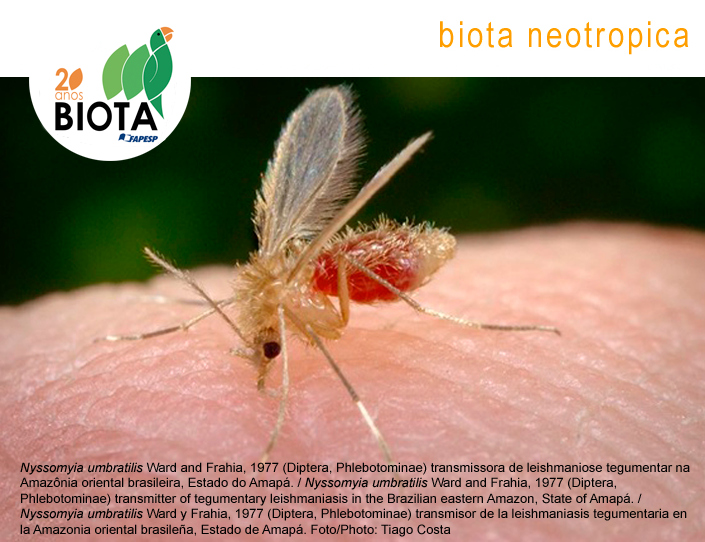Antennal sensilla in Cyclocephala literata Burmeister, 1847 (Coleoptera: Scarabaeidae: Dynastinae)
Abstract
Abstract: Adults of the beetle Cyclocephala literata Burmeister, 1847 are important pollinators to some Magnoliaceae. Is known that insects could find host plants by detecting volatiles through antennal sensilla. Cyclocephala has its three distal antennomeres lamellate, and the surface of each lamella has sensilla trichodea, chaetica, placodea, coeloconica, basiconica and ampullacea. Three kinds of sensilla placodea were found (type I, II and III), and two kinds of sensilla coeloconica were observed (type I and II). Females have on average 10,776 sensilla, of which 10,214 are sensilla placodea, 536 are sensilla coeloconica, and 26 are sensilla basiconica. Males have on average 10,386 sensilla, of which 9,873 are sensilla placodea, 464 are sensilla coeloconica, and 49 are sensilla basiconica. Males and females have similar quantities of sensilla, and sensilla placodea are predominant. The differences observed in the number of sensilla of males and females were found in other beetles and were attributed to the detection of cospecific sexual pheromones by one of the sexes, or to the detection of plant volatiles. The antennal sensilla of C. literata is described and quantified in present study, and some perspectives about the differences kind of chemical communication, pollination, and antennae dimorphism is discussed.Published
2022-01-01
How to Cite
Nagamine, R. R. V. K., Costa, C. G., Fuhrmann, J., & Rodrigues, S. R. (2022). Antennal sensilla in Cyclocephala literata Burmeister, 1847 (Coleoptera: Scarabaeidae: Dynastinae). Biota Neotropica, 22(2). Retrieved from https://www.biotaneotropica.org.br/BN/article/view/1905
Issue
Section
Articles
